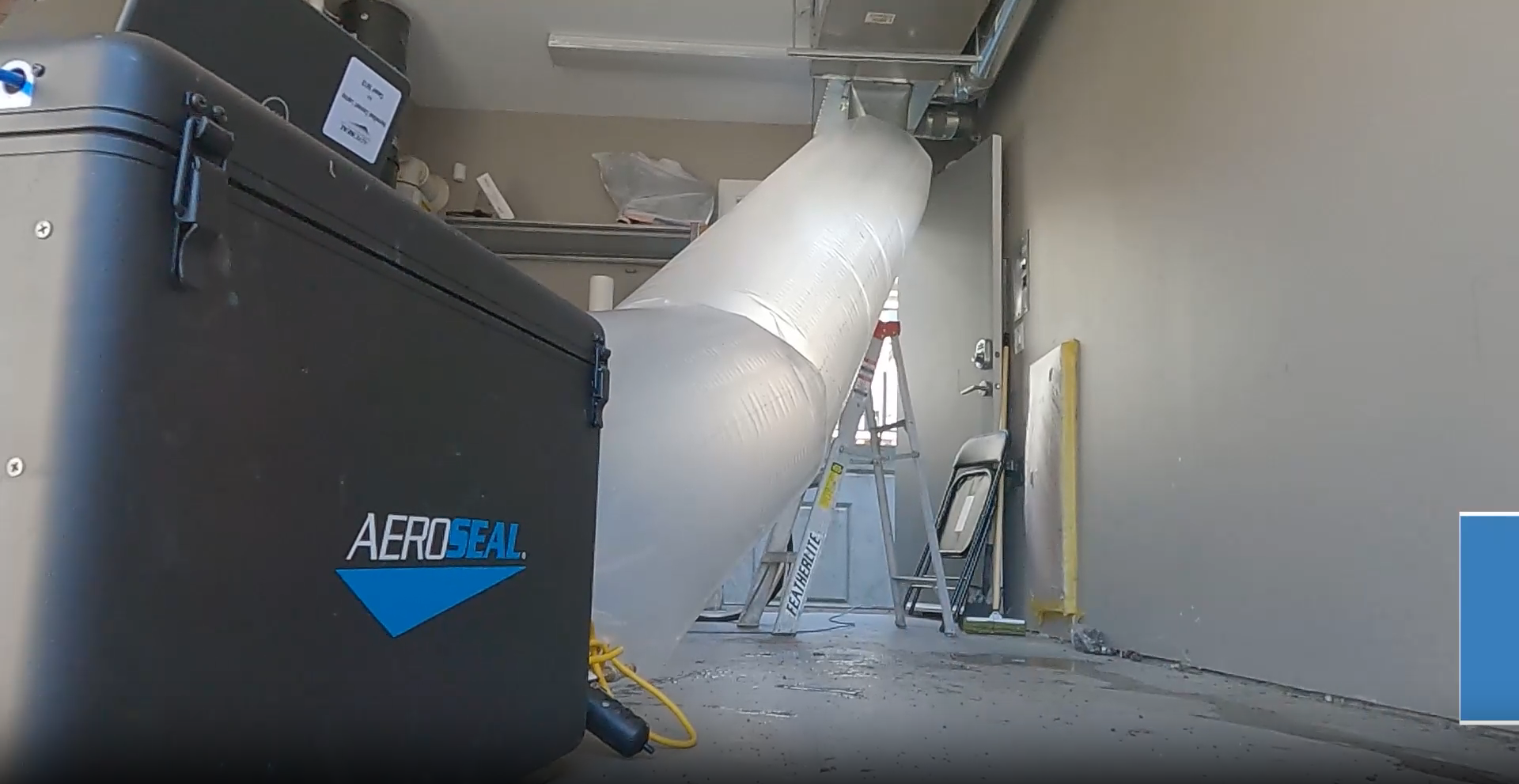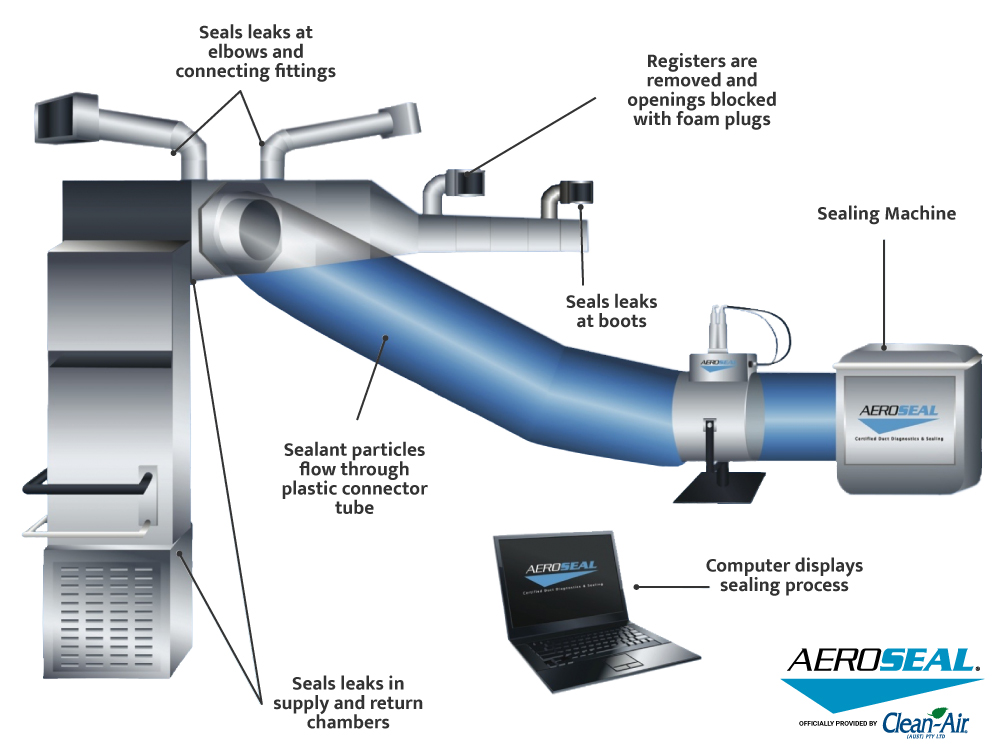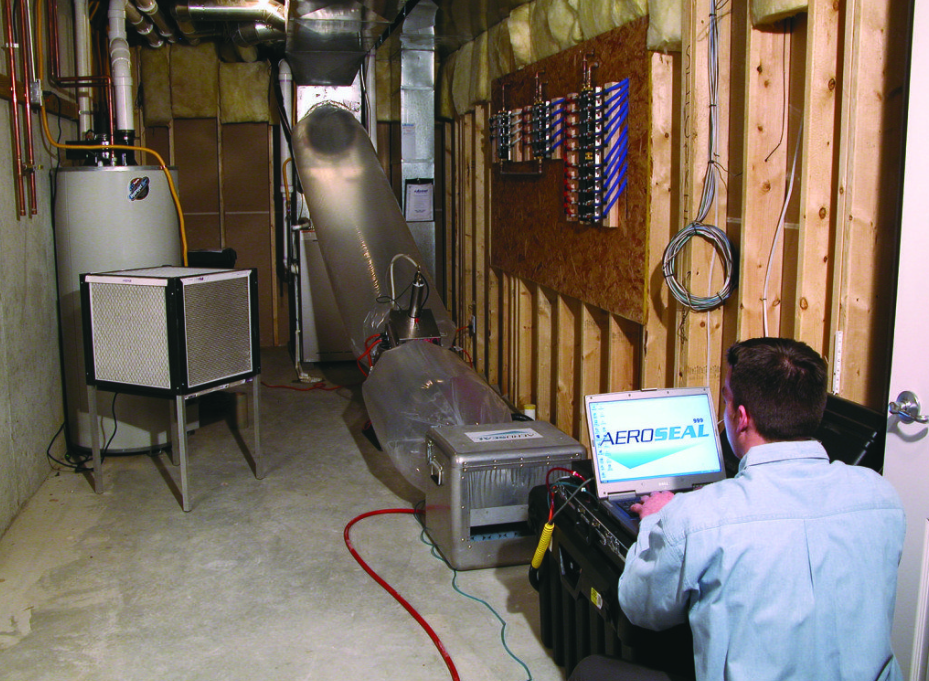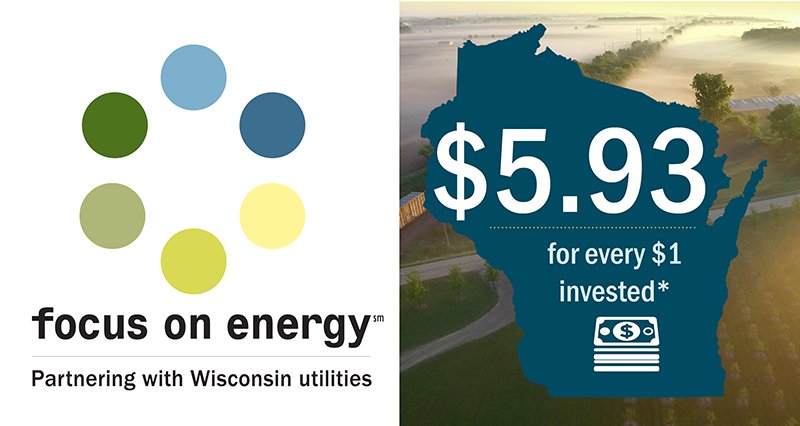How Much Does Air Duct Sealing Cost in Wisconsin?

If your energy bills are higher than expected, leaky air ducts could be the culprit. When air ducts have gaps, cracks, or leaks, your HVAC system has to work harder to maintain the desired temperature in your home, leading to energy waste and inflated utility bills. This puts extra strain on your system and reduces your home’s comfort.
Aeroseal air duct sealing offers an innovative and efficient solution that seals these gaps from the inside. This improves your home’s energy efficiency and helps reduce costly bills. By ensuring that conditioned air reaches its intended destination, Aeroseal duct sealing can optimize your HVAC system’s performance, making it more efficient and cost-effective in the long run.
- Read our in-depth article about the benefits of air duct sealing.
Key Takeaways:
- Aeroseal duct sealing costs in Wisconsin typically range from $1,000 to $3,200.
- Several factors influence costs, including home size, duct complexity, and the project scope.
- WE Energies, in partnership with Focus on Energy, offers local and national rebates, helping reduce the overall cost of duct sealing for Wisconsin homeowners.
Factors Affecting Duct Sealing Costs in Wisconsin
The cost of duct sealing in Wisconsin varies based on several factors. Here’s a detailed look at what can increase or decrease the price:
| Factor | Impact on Cost |
|---|---|
| Size of Your Home | Larger homes with more ductwork require more materials and labor, leading to higher costs. |
| Location | Regional demand, local labor rates, and competition in areas like Milwaukee or rural Wisconsin can influence pricing. |
| Scope of the Project | Homes with extensive leaks or more complex duct systems will face higher costs due to the increased time and resources required. |
| Sealing Method | Aeroseal’s aerosol-based system is more efficient but may also be pricier than manual sealing techniques. |
| HVAC System Complexity | Complex or outdated HVAC systems might require additional services or repairs, increasing the overall cost of the duct sealing project. |
| Local HVAC Variables | The age of your system, the condition of your ductwork, and specific local market conditions can also affect the final cost of the service. |

Aeroseal vs. Traditional Duct Sealing Methods
Comparing Aeroseal with traditional manual methods is essential when considering the duct sealing cost. Here’s how they stack up:
| Method | Cost | Efficiency | Best For |
|---|---|---|---|
| Aeroseal | $1,000 – $3,200 | Seals leak up to 5/8 inches, reaching areas manual methods can’t. | Homeowners with extensive or hard-to-reach leaks. |
| Manual Sealing | $500 – $1,500 | It is effective for more significant, visible leaks but may miss smaller or hidden gaps. | Homes with easy-to-access, visible ductwork. |
Due to its advanced technology, Aeroseal is typically more expensive upfront than manual methods. It uses a polymer-based aerosol to seal leaks inside the ducts, effectively reaching cracks and gaps that manual methods often miss. This process leads to better long-term savings on energy bills, as it prevents even tiny air leaks.
Manual sealing involves using mastic or aluminum tape and is a less expensive option. However, it’s more labor-intensive and may not be as thorough, especially in complex duct systems with hard-to-reach areas. Over time, the energy savings from manual sealing might not be as significant as those from Aeroseal.

Causes and Impacts of Duct Leakage
Aging systems, poor installation, or lack of maintenance commonly cause duct leakage. Over time, seals can weaken, allowing conditioned air to escape. This results in higher energy bills and uneven heating or cooling throughout the home. The U.S. Department of Energy estimates that duct systems lose 20-30% of air through leaks, making duct sealing a crucial step in reducing energy costs.
Financial Considerations and Incentives
The duct sealing cost in Wisconsin generally falls between $1,500 and $2,500. However, larger homes or duct systems in poor condition may cost up to $3,200. Fortunately, homeowners can use rebates and tax incentives to offset expenses, making the service more affordable.

WE Energies and Focus on Energy Rebates for Wisconsin Homeowners
For Wisconsin homeowners, WE Energies, in partnership with Focus on Energy, offers rebates that can help make duct sealing and other energy-efficient upgrades more affordable. These programs also integrate national rebate opportunities, offering further savings. Here’s a breakdown of the rebates effective for improvements made on or after July 1, 2024:
| Service | Standard Rebate | Income-Qualified Rebate |
|---|---|---|
| ENERGY STAR® Qualified Air Sealing | $675 | $1,125 |
| Duct Sealing & Insulation | $75 | $75 |
| Verified Duct Sealing & Insulation | $150 | $150 |
Multifamily homes (4+ units) can also qualify for air sealing and insulation rebates, ranging from $0.55 to $1.00 per square foot, depending on the existing insulation level.
In addition, national rebates from the Inflation Reduction Act (IRA) are available through Focus on Energy’s partnership, which helps deliver these energy rebates in Wisconsin. Homeowners can combine rebates from WE Energies and the IRA Home Energy Rebates program to maximize savings. Focus on Energy was selected by the Public Service Commission of Wisconsin to deliver these rebates, offering opportunities to save on energy-efficient home upgrades, including duct sealing.
Payback Period and Long-Term Savings
While duct sealing has an upfront cost, the investment typically pays for itself within 2-3 years through energy savings. Properly sealed ducts can reduce energy bills by 20-30%, saving homeowners hundreds of dollars annually. Additionally, by preventing air leaks, you can extend the life of your HVAC system, further increasing long-term savings.
Estimating the Payback Period
To calculate your payback period:
- Determine total costs: Add the duct sealing cost minus rebates or tax credits.
- Calculate savings: Estimate your monthly energy savings after sealing.
- Divide: Divide the total cost by monthly savings to find the number of months it will take to recover the initial expense.
Conclusion
In Wisconsin, Aeroseal duct sealing provides homeowners with a practical solution for improving energy efficiency and lowering utility bills. Costs typically range from $1,500 to $2,500. Still, rebates and tax credits from programs like WE Energies, Focus on Energy, and national rebate opportunities through the IRA Home Energy Rebates can make this investment more affordable.
When comparing Aeroseal to traditional methods, long-term savings and improved duct sealing efficiency often justify the higher initial cost. With a payback period of just a few years, duct sealing is a smart choice for anyone looking to reduce energy waste and save money in the long run.


